


Some IGBTs (doomed)
I modified the heatsink assembly to hold two IGBTs and rewired the primary. One core now goes to each collector pin.
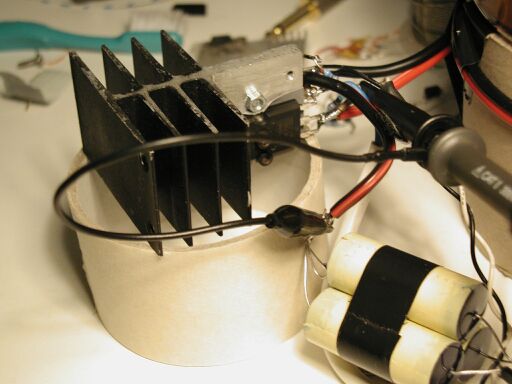
Transistor/heatsink assembly
I kludged everything together on the workbench.
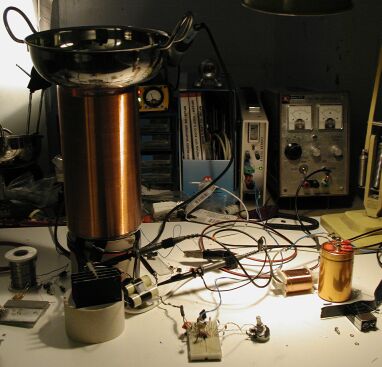
All kludged up and ready to go
Then I stuck some power on it. The driver board was running 110bps. At 25V it buzzed a bit and sent out a 1" spark to my desk lamp. I shot these scope traces, they show the operation at 25v with sparking, and without (I moved the lamp further away). Top trace is tank capacitor voltage, bottom is electrostatic voltage picked up by an open scope probe 10" away from the topload. Textbook stuff. Note the secondary only takes 3.5 cycles to ring up, so the coupling must be pretty high.
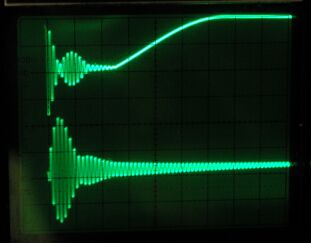
|
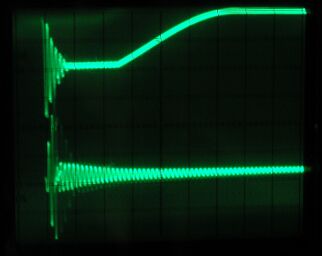
|
| No spark | Spark |
Under these conditions I adjusted the quenching for 3rd notch.
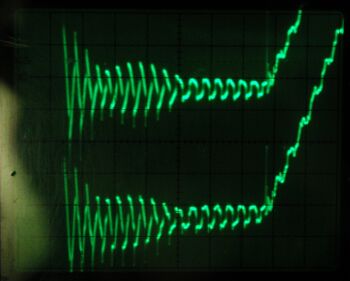
Volt drop across IGBTs (5V/div)
Next I hooked one scope probe across each IGBT and put the power supply up to 100 volts. You can see each device is dropping about the same voltage, so the current sharing is probably functioning.
Finally, I crossed my fingers, touched wood, and wound it up to 300 volts. Drawing 150mA, it produced a cool 5 inch long arc. I let it run for 2 minutes after which the heatsink, primary coil, secondary coil, and caps were all quite warm to touch. Both IGBTs felt about the same temperature. Success!
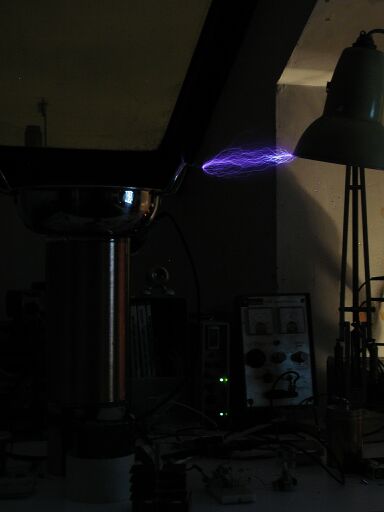
Eat plasma, desk lamp!
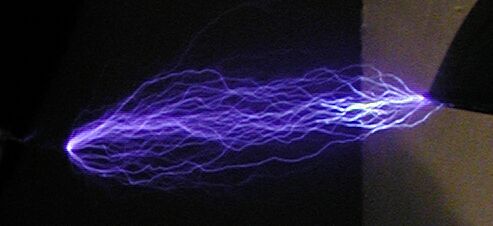
And again!
So I generated a 5 inch arc with 45 watts of DC input. According to the 1.7 x sqrt(power) formula I should be getting 10". But then, this is a small coil and the formula is known to overestimate. I think overall, it's doing pretty well. Remember, I'm only running 300V and 110bps just now, I still intend to go to 340V and 400bps, which will increase the power to 210 watts. I'd like to try short bursts of 1000bps (525W) but I suspect the transistors might overheat and blow out within a second or two. Maybe I could borrow some SSTC tricks like staccato or running off half-wave unfiltered DC.
Even if it never does impressive sparks, it's still an awesome research tool because every bang is perfectly even and so it's easy to measure with a scope. Plus it's an OLTC! One of two in existence! ZZAAKKK... Paging Terry Fritz!